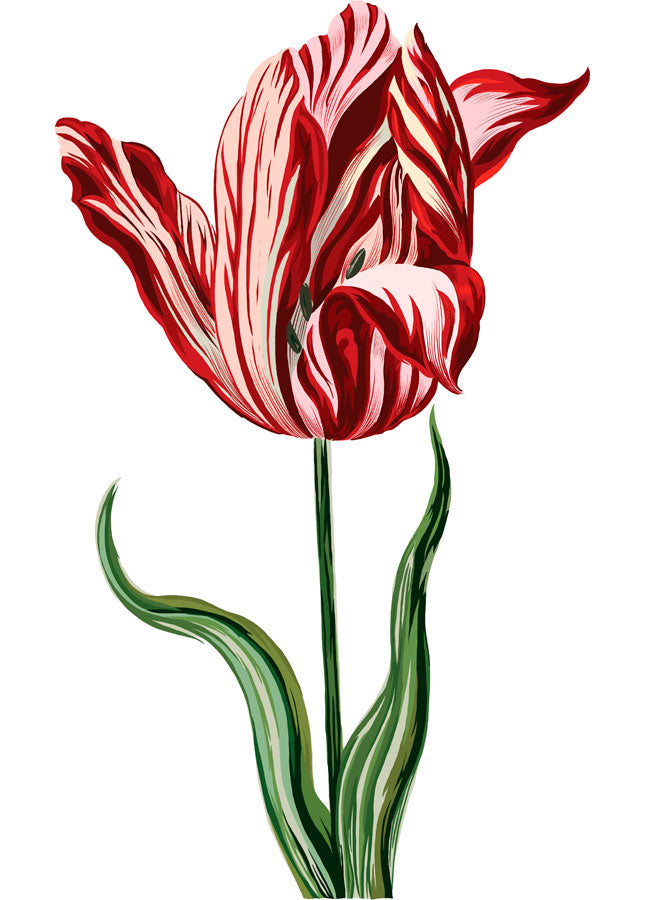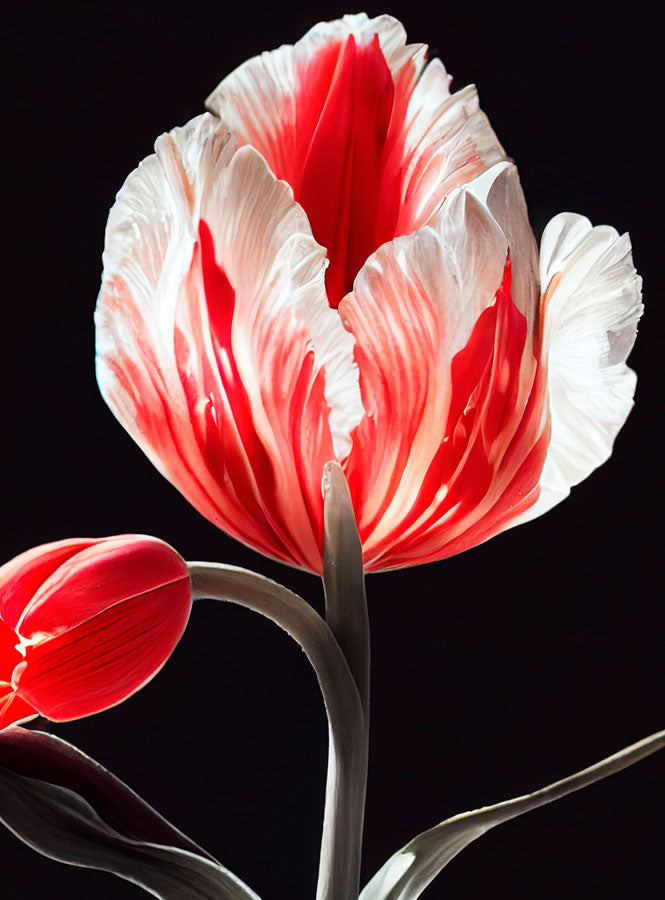Semper Augustus: History’s Most Famous Tulip
Without question, the most famous tulip in history is the red and white Semper Augustus—a “broken tulip" that supposedly sold for more than a house during Tulipmania.

It may seem strange to declare a single flower above the rest. After all, when beauty is in the eye of the beholder, what right does anyone have to select one and declare it superior?
Yet, the Semper Augustus has managed to claim that title. With deep crimson flares against a milky white base, this bloom has been a source of awe and admiration for hundreds of years as the “King of Tulips."
The story of the Semper Augustus is set in the early decades of the seventeenth century. The Dutch were entering into their golden age, when new independence combined with mercantilism and trade to generate a never-before-seen level of prosperity. With an influx of disposable income, merchants sought out ways to display their wealth in a manner that was somehow still in keeping with the Protestant values of modesty. Newly introduced tulips, with their discrete and orderly blooms, made for a perfect fit.

Buyers began seeking out rare and beautiful breeds, hoping to stand out amongst their friends and neighbors. The rarest and most beautiful of the breeds were so-called Broken Tulips, which had petals with two different colors in contrasting flame-like patterns. The condition was first discovered in 1576 by famed botanist and father of the Dutch tulip industry Carolus Clusius. At the time, no one understood what caused the “breaks," and desperate breeders had to more or less rely on luck to find one in their own patch.
The Semper Augustus likely began in this way—a matter of chance for a lucky grower. We do not know who this first grower was, but we do know the impact his flower would go on to have.
The Broken Tulip's Allure
Even amongst the Broken Tulips, the Semper Augustus stood out. Subtle details like the thickness of its lines and the stark contrasts of its colors gripped the eyes of any who cast their gaze upon it. Captured in still-lifes by expert painters, as well as in catalogues that used new and highly detailed printing technology, the stunning plant was shared far and wide.
The flower’s scarcity only added to its allure. In 1624, someone wrote that only 12 examples even existed, all owned by a single individual. This person was believed to be Adrian Pauw, a director of the Dutch East India company and a leading official in Amsterdam. Already fabulously wealthy, he refused to sell any of his prized flowers, in turn only increased desire for the bulbs.
Reliable historical data is difficult to find, but in 1633 one bulb was said to have sold for 5,500 guilders, more than three times the annual earnings of a typical merchant. At the peak of Tulipmania in 1636-1637, it was said that 10,000 guilders were offered to buy a tulip, enough to purchase a grand house on the finest canal in Amsterdam. While exact figures and details cannot be validated, few would disagree that the Semper Augustus was viewed as above all others during this time.
Sadly, the story of the Semper Augustus goes quiet from here. It is likely that, following the burst of the Tulipmania bubble, growers likely continued to breed and sell its bulbs. However, their work would become more and more difficult.
Researchers in the 1920s finally revealed that the source of the Semper Augustus’ beauty was also a curse—a virus known today as the TBV or “Tulip Breaking Virus." While it caused amazing color patterns, it also weaken the bulb, including any offshoots produced. With each subsequent generation, the bulbs would become more and more degraded, until one day they would be too weak to flower and the genetic line would die off.
Today, we can only speculate, but this seems to be the likely end faced by the world’s most famous tulip. Despite all of its beauty and prestige, it disappeared silently. Today, all we have left are paintings.
But while gone, it is not forgotten. Seeking a solution free of the virus, growers have developed new varieties over the centuries that attempt to match the red and white flares, including World Expression, Happy Generation and Sorbet.
Many people find these new varieties to be just as stunning as the Semper Augustus itself, and gladly plant them in gardens around the world. However, others feel them to be at best a shadow of the original, unable to match its bold contrasts and stark flames. In the end, beauty is in the eye of the beholder.
